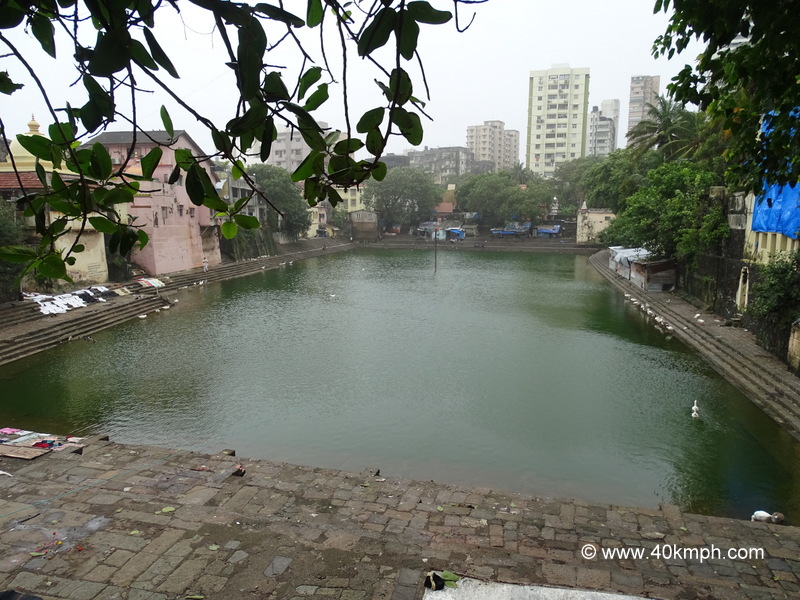After two days of rain and a clear blue sky, I decided to visit Banganga Tank – My first visit.
How do I reach Banganga Tank?
The nearest railway station to Banganga Tank is Grant Road. After reaching Grant Road I walk towards the West side to climb the skywalk to walk a few meters till I reach the stairs towards Chowpatty. Once on the road, I walk near Gamdevi Police Station (Estd. 1917) on the right side and cross two red lights to reach Wilson College. Cross the road > turn right > walk straight for approx 2 km following beautiful sea waves/shore to reach Teen Batti at Walkeshwar. Little more walking to reach Shri Ghanshyamdas Sitaram Poddar chowk. After crossing the chowk, there are two paths. The right side path is towards Banganga Tank.
It is approx. 30 minutes walking time from Grant Road railway station to Banganga tank. You may hire a taxi or a B.E.S.T. bus. I prefer walking, especially when the area around is nice & beautiful.
The Banganga area is one of the oldest living areas in Mumbai. Banganga Tank is a rectangular tank with many temples all around it. Lampposts are at the entry point. Lots of ducks inside the water as well at tank stairs and also fish inside the water. One can see High-rise buildings at a little distance. In short – a mixture of modern and ancient times at the same location.
History (as per display board)
- Banganga Tank is a rectangular tank – 135 meters long, 52 meters wide, and 10 meters deep at the center.
- It is said Lord Rama on his way to Lanka in search of Sita, halted at this spot to seek the blessings of Sage Gautama.
- Lord Rama to quench his thirst shot a Baan (arrow) into the nether world and released the Bhogavati, the underground Ganga, thus the Banganga.
- Under the sage’s advice, Rama worshipped Lord Shiva, whose Linga was brought from Kashi (Varanasi) every day by Lakshmana. One day the Linga could not reach the site in time for the daily puja. Rama then fashioned a Linga from the surrounding sands and performed the Prana Pratishtha (Life creating ceremony).
- The Temple built on this spot was then called ‘Waluka Ishwar” (God of sand) and over the years came to be known as Walkeshwar.
- The Banganga tank dates back to Silahara Period (from 810 to 1250 A.D.) and was repaired in the Yadava period.
- Some of the earliest settlers were the Gaud Sarawat Brahmins.
I did a parikrama (walk around) at Banganga Tank and sat on the stairs for approx. 30 minutes. Immense silence. I am happy I did a pilgrimage in Mumbai.
Lots of Bhel Puri shops are in the Banganga area. While returning, I stop at Punjabi Chandu Halwai Karachiwala (Estd. 1896) and had Kesar Rasmalai for Rs. 31/-. Delicious it was. And nearby Wilson College in front of Bharatiya Vidya Bhavan, I had one plain dosa (Rs. 20) and cutting chai (Rs. 6). Thus the journey was completed.
One should visit the Banganga tank if touring or visiting Mumbai.

nice that you covered this 🙂
Tough to believe this is Mumbai 🙂 But then Mumbai has so many nice hidden gems.. 🙂